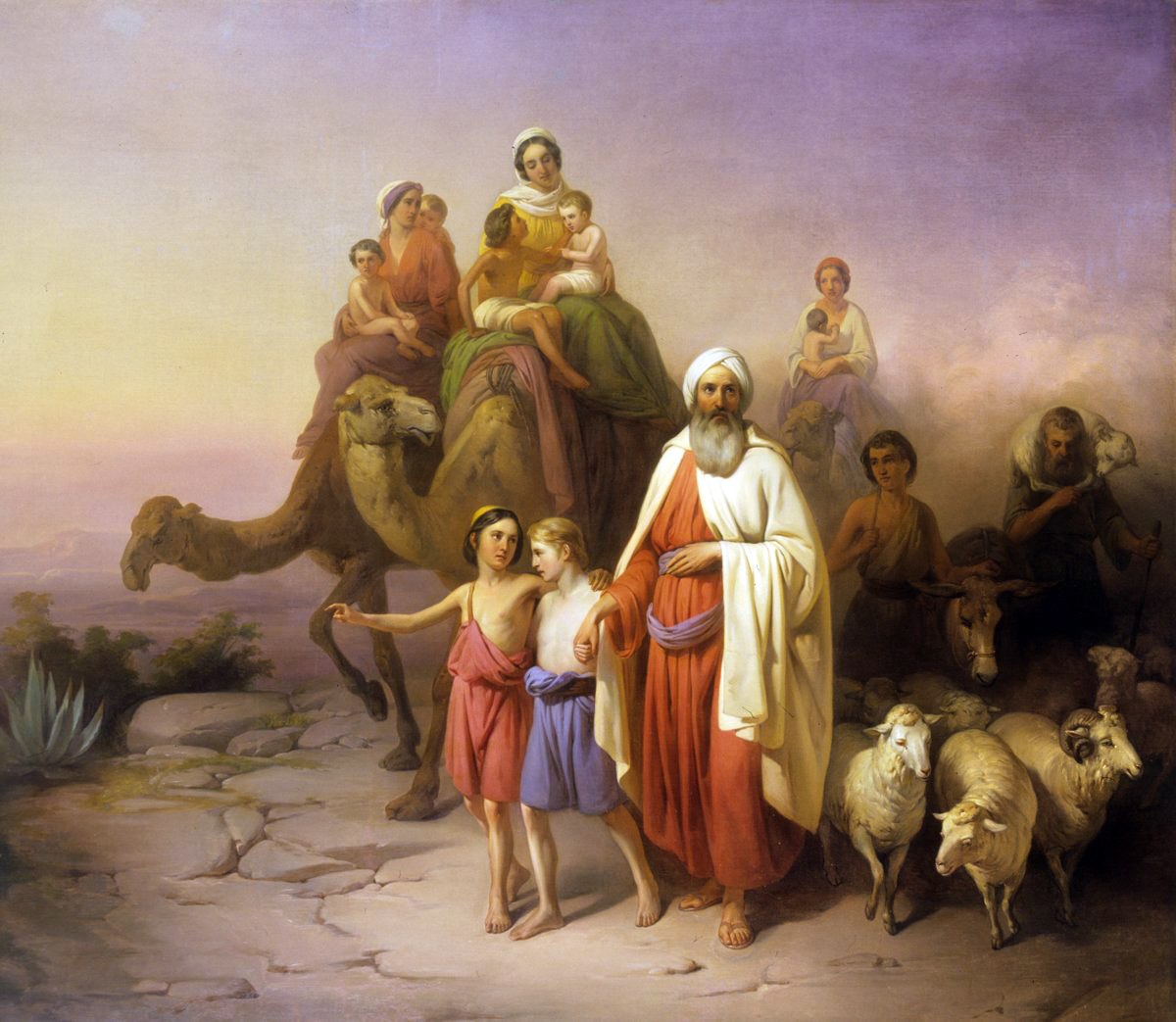
Patriarchal Period of Judaism
IsraelNomadic tribesmen (ancestors of Jews) migrate from Mesopotamia to settle the land of Canaan (later called Israel) where they formed a patriarchal society of tribal lineages. According to the Bible, this migration and settlement was based on a divine call and promise to Abraham—a promise of national blessing and bounty for Abraham and his descendents if they remain faithful to the One God (the first moment that God enters human history). With this call, the first covenant was established between God and the descendents of Abraham.
The most eminent of early biblical archaeologists was William F. Albright, who believed that he had identified the patriarchal age in the period 2100–1800 BCE, the Intermediate Bronze Age, the interval between two periods of highly developed urban culture in ancient Canaan. Albright argued that he had found evidence of the sudden collapse of the previous Early Bronze Age culture, and ascribed this to the invasion of migratory pastoral nomads from the northeast whom he identified with the Amorites mentioned in Mesopotamian texts. According to Albright, Abraham was a wandering Amorite who migrated from the north into the central highlands of Canaan and the Negev with his flocks and followers as the Canaanite city-states collapsed. Albright, E. A. Speiser and Cyrus Gordon argued that although the texts described by the documentary hypothesis were written centuries after the patriarchal age, archaeology had shown that they were nevertheless an accurate reflection of the conditions of the 2nd millennium BCE. According to John Bright "We can assert with full confidence that Abraham, Isaac and Jacob were actual historical individuals."
Following Albright's death, his interpretation of the Patriarchal age came under increasing criticism: such dissatisfaction marked its culmination with the publication of The Historicity of the Patriarchal Narratives by Thomas L. Thompson and Abraham in History and Tradition by John van Seters. Thompson, a literary scholar, argued on the lack of compelling evidence that the patriarchs lived in the 2nd millennium BCE, and noted how certain biblical texts reflected first millennium conditions and concerns, while Van Seters examined the patriarchal stories and argued that their names, social milieu, and messages strongly suggested that they were Iron Age creations. Van Seter and Thompson's works were a paradigm shift in biblical scholarship and archaeology, which gradually led scholars to no longer consider the patriarchal narratives as historical. Some conservative scholars attempted to defend the Patriarchal narratives in the following years, but this position has not found acceptance among scholars. By the beginning of the 21st century, archaeologists had given up hope of recovering any context that would make Abraham, Isaac or Jacob credible historical figures.
